Brains to Social Sciences

Interview by Richard Marshall

'Science is not just a useful device for making predictions, but rather aims to describe and explain the world, and it often succeeds. Evidence that science does succeed sometimes in achieving truth include the many successful technological applications of science, for example the role of electrons in modern machines. Other signs of truth accomplishment include the wide consensus that operates in many advanced areas of science, and the effective role of experiment in sometimes overturning established theories.'
'It is clear that animals and computers can be intelligent, although my analysis of features and mechanisms make it clear that they are not nearly as intelligent as humans.
'The theory of emotions and other mental states as propositional attitudes is ... obsolete.'
'Instead of ignoring the qualitative aspects of consciousness, I set out to explain them using neural mechanisms. For example, my account of emotional consciousness explains why emotional experiences start and stop and why they have different content, different intensities, and different positive/negative characteristics.'

Paul Thagard is is a Canadian philosopher who specializes in cognitive science, philosophy of mind, and the philosophy of science and medicine. Here he discusses cognitive science and intellectual trading zones, unifying the humanities, social science and cognitive science, conceptual change, how scientists explain disease, causal inferences in science and education, explaining explanations, why Bayesianism is fit only for God, emotions in epistemology, how to understanding intelligence, consciousness, human consciousness and IQ, thought experiments, and why the brain revolution and neural naturalism is of such importance and can help us even get to grips with questions about the meaning of life.
3:16: What made you become a philosopher?
Paul Thagard: I attended a Catholic high school but found myself with increasing doubts about the contents of the religion classes. When I was 15, I worked at the Saskatoon Public Library shelving books and came across a title by Bertrand Russell: Why I Am Not a Christian . I devoured his responses to the standard arguments for the existence of God and started reading other philosophy. Around the same time, I shelved a book in the jobs section about university professors, so I decided to become a philosophy professor. Amazingly, this plan worked out wonderfully.
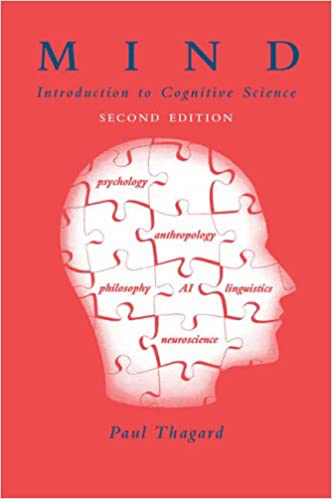
3:16: Cutting edge research which concerns topics that cut across or occur at the boundaries of two or more of the established disciplines must be interdisciplinary. As you point out, Cognitive science is the interdisciplinary study of mind, embracing psychology, artificial intelligence, philosophy, neuroscience, linguistics, and anthropology and is one of the major interdisciplinary successes of the twentieth century, with its own society, journal, and textbooks, and with more than sixty cognitive science programs established at universities in North American and Europe. You use the metaphor of a ‘trading zone’ to discuss this. So can you unpack that metaphor and say what the factors are contributing to the success of the interdisciplinary field of cognitive science?
PT: Geographically, a trading zone is a place where people from different countries or cultures can get together to exchange goods. Analogously, an intellectual trading zone consists of institutions such as universities, conferences, organizations, and publications where ideas can be exchanged. For more than 50 years, cognitive science has valuably served to generate intellectual trading zones for ideas about the mind, connecting both the concepts and methods of many different fields. But cognitive science has been not just a trading zone but also a manufacturing zone, leading to the generation of valuable hypotheses about thinking that could not have come from one field alone. For example, Chris Eliasmith’s Semantic Pointer Architecture, which I think is the best theory of mind currently available, powerfully integrates ideas from neuroscience, computation, philosophy, psychology, and linguistics. The result is not just an amalgam of ideas from different fields, but rather a powerful new synthesis that tells us more about the mind than any previous theory.
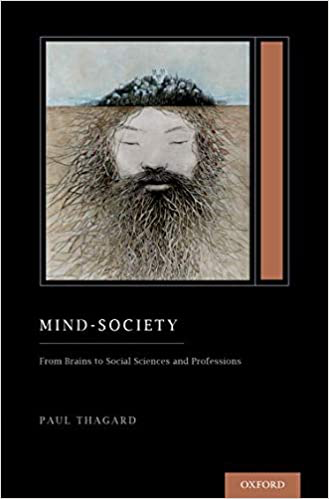
3:16: You argue that we can unify the humanities with cognitive and social sciences so that theories of mind, knowledge, reality, morality, justice, meaning, and the arts can be understood through shared standpoints. Can you say how you think theories of brain mechanisms and social interactions make this possible and does this mean that the conventional ways of carving up a curriculum in schools and universities as well as research funding are nothing more than convenient (or inconvenient) bureaucratic organisational conventions?
PT: Ideas often move fast through the creation of new concepts and hypotheses by means of novel collaborations across disciplines. But organizations such as universities and governments usually move slowly, not keeping up with intellectual advances. For example, the departmental structure in most universities is much the same as it was 100 years ago, despite wonderful advances in knowledge that should have brought about fundamental reorganizations. I like the quip of Sydney Smith that changing a university has all the problems of moving a cemetery. Administrators and government agencies often extol the advantages of interdisciplinary work while doing little to encourage it. Fortunately, researchers who follow intellectual goals often manage to sidestep bureaucratic obstacles. It would be wonderful if there were more organizations with the nimbleness to encourage rather than to hinder interdisciplinary projects, including ones that cross the sciences and humanities. Because thinking in the sciences and humanities use fundamentally the same thinking processes, and because these processes are carried out by the same kinds of brains, neuroscience helps to bridge the gaps between the facts and values across all disciplines.
3:16: Given that brain science and social science seem to be the cornerstones of this unification why would an arts theorist, for example, be wrong to see this as just another attempt to ‘reduce’ her subject domain to either or both of those sciences? Does this idea of ‘semantic pointer architecture’ used to explain mind, cognition and related concepts threaten the distinctiveness of subject disciplines?
PT: My goal is not to reduce arts subjects to neuroscience, psychology, or the other fields of cognitive science. I think that literature, painting, sculpture, music, and other artistic enterprises are among the best accomplishments of human minds and societies. But all of these activities result from kinds of mental representation, problem solving, decision making, creativity, and social interactions that are becoming increasingly well understood through advances in cognitive science. Therefore, arts theorists have much to gain by learning from and contributing to the scientific study of mind, including appreciation of the emotions and values that are central to the humanities. I argue, for example, that values are emotional mental states that nevertheless can be appreciated as objective standards.Eliasmith’s Semantic Pointer Architecture is rich enough to explain mental phenomena such as consciousness and emotion that are central aspects of artistic thinking.
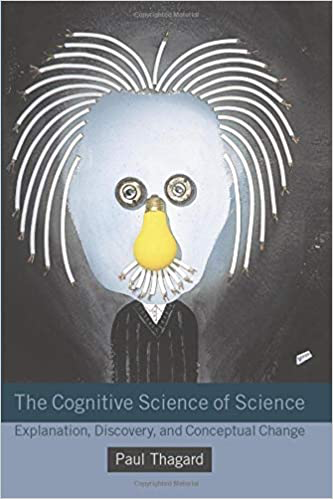
3:16: Now you’ve also written about conceptual change in biological science, charting a progression from theological to qualitative to mechanistic paradigms, a three stage progression originating in Compte. First, can you sketch for us this line of conceptual change in the science of life, mind and disease?
PT: Let me use the example of progress in medicine. Before Hippocrates, diseases were usually explained as afflictions brought upon people by the gods. Then diseases were explained qualitatively as imbalances in four humors: blood, phlegm, and black and yellow bile. The 19th century brought scientific theories that explain diseases mechanistically as breakdowns in interactions of cells whose proper functioning explains health. For example, we know that the new disease COVID-19 results from the disruption of normal cellular operation because of infection by invisible viruses. Mechanisms, which are combinations of connected parts whose interactions produce regular changes, explain normal functioning that amounts to health. Correlatively, breakdowns in these mechanisms result in undesirable symptoms that signal disease.
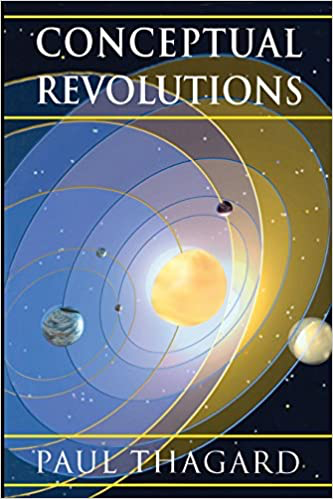
3:16: Now this brings us to a big issue for science and educators of science, one that you’ve discussed in relation to the debate about evolution and creation. So in that domain, how do you explain the demarcation between science and non-science, how should theories be evaluated and does science give us the truth? And do your responses to these issues in regards to evolutionary explanation extend to the rest of science or does each area require a different set of answers?
PT: Early attempts to demarcate science from pseudoscience failed because ideas like verification and falsification were too vague and did not capture how science works. I've taken a different approach based on the recognition that most concepts do not have strict definitions in terms of necessary and sufficient conditions, but rather are marked by typical features. The typical features that characterize science are: systematically collecting evidence that identifies correlations in the world; using mechanisms to provide causal explanation of this evidence; rigorous comparison of theories with alternatives; use of simple theories that do not proliferate auxiliary hypotheses; and cumulative progress that builds new theories that incorporate or competitively supersede others. These features effectively demarcate sciences such as physics from pseudosciences such as astrology.
Science is not just a useful device for making predictions, but rather aims to describe and explain the world, and it often succeeds. Evidence that science does succeed sometimes in achieving truth include the many successful technological applications of science, for example the role of electrons in modern machines. Other signs of truth accomplishment include the wide consensus that operates in many advanced areas of science, and the effective role of experiment in sometimes overturning established theories.
I think that methods of evidence collection, theory evaluation, and creative problem-solving operate similarly across all areas of science, from physics to evolutionary biology and to the social sciences when they are done well.
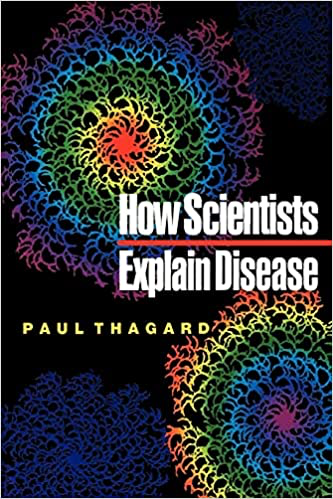
3:16: Perhaps it would be helpful for you to give an example of what you take a theory to be by sketching for us what you take a medical theory to be as an example?
PT: COVID-19 again provides a useful example. We have good medical theories of respiration based on extensive knowledge of the mechanisms by which air enters the lungs that transfer oxygen into the bloodstream. The parts of the respiratory mechanism include the mouth, nose, sinuses, throat, trachea, bronchial tubes, lungs, and diaphragm, with specific interactions that extract oxygen carried out by components that include the alveoli bronchioles, and capillaries. The symptoms that mark COVID-19 result from molecular mechanisms by which the novel coronavirus invades cells in the nose, throat, and lungs and disrupts their operation in ways that interfere with acquisition of oxygen. Hence health is explained by the proper functioning of mechanisms, and disease is explained by breakdowns in those mechanisms.
3:16: How to make causal inferences is a key conundrum for anyone trying to explain what causes what when faced with a complex evidential situation. Educationalists and medical researchers both have this dilemma. You’ve discussed the case of the medical researcher in relation to this. So how do they make causal inferences?
PT: Causal reasoning in education is fundamentally the same as causal reasoning in medicine. In both cases researchers need to clearly state a causal hypothesis and evaluate it according to the following criteria. What is the evidence that the hypothesis explains? What evidence is hard to explain from the perspective of that hypothesis? What alternative theories or hypotheses are available to provide alternative explanations? Are there established mechanisms that connect in detail the proposed cause with the observation that it is supposed to explain? You can find medical examples in my article on paulthagard.com: “How do medical researchers make causal inferences?”
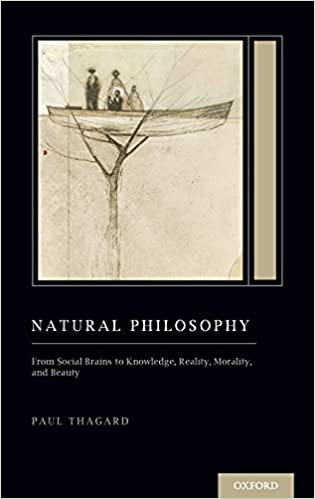
So let me give you an educational example. Suppose someone claims to have a new method that improves children's learning how to read. This is a causal claim because it says that the method causes learning improvement. Before this claim is accepted there need to be carefully done experiments that show that the method actually improves learning. There also needs to be consideration of experiments that don't find the effect of learning improved by the use of the method. The hypothesis that the method works should be evaluated in comparison to other reading methods that are known to work or not work. For deep explanation, there should be understanding of the psychological and neural mechanisms by which use of the method actually improves children's learning to read. If this full-scale coherent approach to assessing causal claims is taken, then education can have the same kind of rigorous causal reasoning that occurs in medicine, instead of the adoption of fads that too often occurs.
3:16: When I talk to logicians I often slide into talking about how people reason and get told that logic isn’t trying to say anything about how people actually reason. You’ve looked at how to evaluate explanations but do people actually do it like theories of scientific explanation say they ought to? And either way, can you sketch for us a psychologically plausible theory of how people do evaluate different theories?
PT: The problem with logicians is that they often make prescriptions that are not only different from how people do reason but even different from how they possibly could. For example, most logical approaches to belief suppose that people believe all the logical consequences of their beliefs, which requires an infinite number of beliefs that exceeds the memory capacity of any organism or computer. Rather than a mathematical exercise, logic should be an attempt to help people think better by improving their reasoning, which requires understanding how we sometimes reason well and sometimes badly. Deductive reasoning is only a tiny part of human thinking, but reasoning about explanations is something we do every day, for example in trying to fix broken machines, understanding our medical symptoms, and trying to figure out what's going on in other people's minds. There are currently available two rigorous theories of how this kind of explanatory reasoning takes place.
One is Bayesian inference which assumes that people can and do figure out the best explanations by calculations using probabilities. I've argued that this approach is flawed because the probabilities in real-life cases are rarely available and the required calculations are psychologically and computationally difficult. Alternatively, my theory of explanatory coherence is easy to apply in everyday and scientific examples, using neural network algorithms that are computationally efficient. Moreover, psychologists have done experiments that suggest that the inferences carried out by explanatory coherence are at least an approximation to how people think when they are free of various distortions that the human mind is subject to. So explanatory coherence provides a rigorous theory of how people think about explanations when they are thinking well, as opposed to Bayesian theories that at best apply to the mind of God.
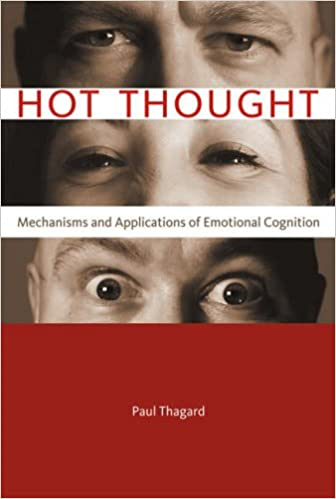
3:16: One thing you’ve emphasized is the role of emotion in epistemology. Some philosophers, such as Frege and Russell, have taken emotions to be best understood as propositional attitudes but you doubt that this is right. So could you sketch for us what Frege and Russell were claiming and then say why you think a naturalistic, materialist approach is a more powerful and fruitful way of looking at the matter?
PT: I am not aware that either Frege or Russell said anything about emotions, but their general approach based on logic was to consider beliefs as propositional attitudes, which are abstract relations between an abstract self and an abstract proposition. A naturalistic approach to mind avoids these abstractions by recognizing that thinking occurs in the brain using patterns of firing in neurons that are organized into groups. From this perspective, an emotion is firing patterns across neurons in multiple brain areas that together represent an organism’s current situation, evaluation of the situation with respect to the organism’s goals, and signals from the organism's body concerning its states such as heart rate, breathing rate, and hormone levels. This approach can explain many important characteristics of emotions, such as the different feelings they involve including why they differ in intensity and positive/negative character, why they stop and start, and how they direct action. The theory of emotions and other mental states as propositional attitudes is therefore obsolete.
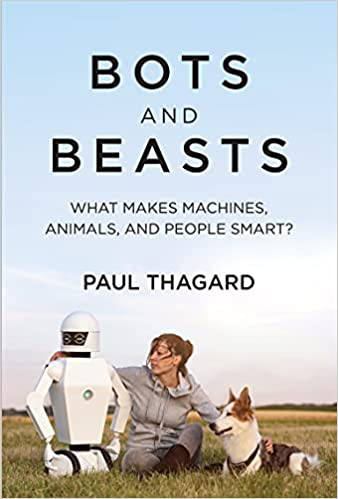
3:16: Now it seems to me that all this feeds into your approach to understanding intelligence. Your new book compares the intelligence of people, animals and robots and the comparisons help you discriminate different kinds of intelligence and what makes human intelligence distinctive. I can see that this might surprise those who don’t think animals and robots are intelligent as well as those who think humans , animals and robots are on a continuum of intelligence whereby there’s no real difference in kind. So first, can you establish why we really ought to consider both animals and robots as being intelligent?
PT: My book Bots and Beasts identifies 12 features and 8 mechanisms for intelligence, and nonhuman animals and computers have most of these features and mechanisms. In particular, intelligence involves problem solving and learning, both of which are found in many animals and some computers. For example, chimpanzees solve social problems and use tools to gather food. Driverless cars solve problems such as navigating around cities and can learn by their experience to do it better. So it is clear that animals and computers can be intelligent, although my analysis of features and mechanisms make it clear that they are not nearly as intelligent as humans.
3:16: .How does consciousness figure in this? Robots aren’t conscious are they, and can we say that bacteria are conscious, or that fish feel pain and dogs get jealous?
PT: We have good reason to believe that people are conscious because we describe our conscious experiences such as perception and emotion and we behave in ways best explained by consciousness, for example when we groan in pain. Birds and mammals have similar behaviors, and they also have brain mechanisms like those that support consciousness in humans. In contrast, there is zero evidence that bacteria are conscious because they lack these kinds of behaviors and have no neural processing. Fish are a trickier case because their brains are so limited compared to those of birds and mammals, but some behavioral evidence suggest that they have pain. Several experimental results imply that dogs actually do get jealous. My book Bots and Beasts presents a general attribution procedure for assigning consciousness and other mental states to non-humans.
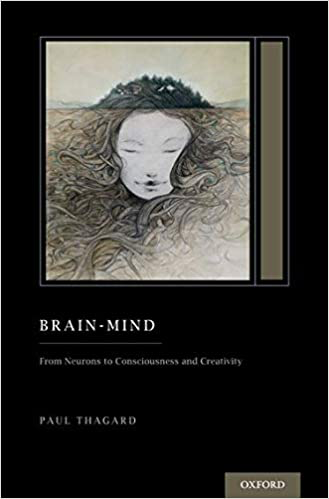
3:16: So what is it about human intelligence that is so distinctive? Isn’t IQ measurement enough? Is it consciousness that makes our intelligence qualitatively different from non-conscious intelligence?
PT: IQ captures only narrow linguistic-mathematical aspects of intelligence, which is better characterized by my 12 features and 8 mechanisms. Consciousness does sometimes contribute to intelligence, but what really makes a difference for humans is our capacity for recursion, which is the ability to embed thoughts about thoughts about thoughts. Recursive thinking enables language and the ability to go beyond perceptual experience. Recursion depends on brain mechanisms that evolved only in the last 100,000 years or so.
3:16: Yours is a science-connected approach to philosophy and your method of approach is via characterizing concepts by identifying examples, features and explanations rather than definitions. You provide ‘value maps’ to depict the emotional coherence of concepts and accounts of explanatory coherence and so forth. Does this mean that philosophers need to stop using thought-experiments, introspection and pure reason and what other implications are there for thinking and teaching?
PT: Thought experiments and introspection are fine for suggesting hypotheses, but they are very unreliable sources of evidence for accepting hypotheses. Philosophical thought experiments rank no better as a guide to truth than religious texts and Republican tweets. Pure reason has never succeeded in establishing any generally acceptable a priori truths. Philosophy can make much more progress by evaluating claims about knowledge, reality, and ethics using evidence gained from the sciences. Philosophy does not reduce to science because it has greater generality and normativity, but can make progress by integrating itself with scientific evidence and theories, as I show in my book Natural Philosophy.
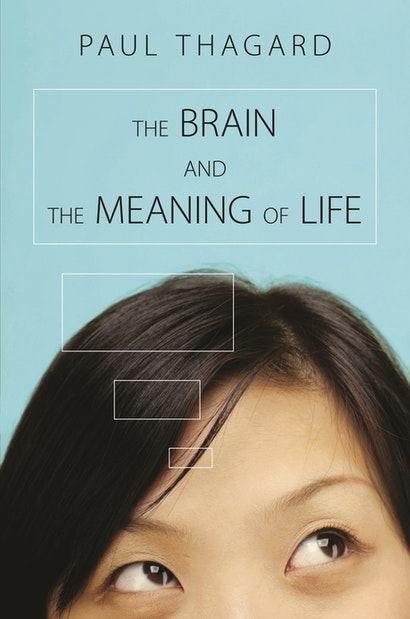
3:16: As a take home, can you say why what you call the brain revolution and neural naturalism is of such importance and can help us even get to grips with questions about the meaning of life? Sceptics will wonder whether this isn’t just another case of a philosopher ignoring important data about a subject (and so distorting it) in order to establish their theory – I’m thinking for example of Dave Chalmers accusing Dan Dennett of ignoring the data of the qualia of consciousness in order to establish his theory of consciousness. Why is the brain revolution not doing something similar to that?
PT: Instead of ignoring the qualitative aspects of consciousness, I set out to explain them using neural mechanisms. For example, my account of emotional consciousness explains why emotional experiences start and stop and why they have different content, different intensities, and different positive/negative characteristics. The brain revolution should bring about deep explanations of everything important about mind and consciousness, although it can ignore vague obfuscations such as "what it's like".
3:16: And finally, for the curious readers here, are there five books you can recommend that will take us further into your philosophical world?
PT: 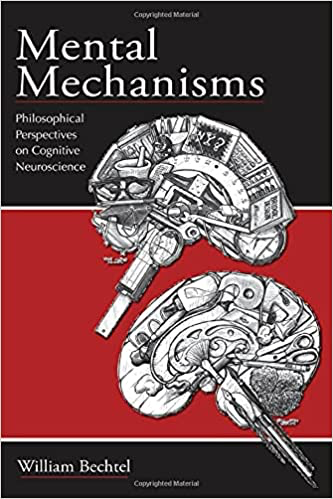
Bechtel, W. (2008). Mental Mechanisms: Philosophical Perspectives on Cognitive Neuroscience. New York: Routledge.

Damasio, A. R. (1994). Descartes' Error: Emotion, Reason, and the Human Brain. New York: G. P. Putnam's Sons.
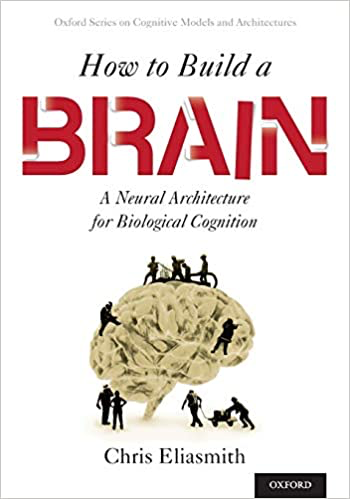
Eliasmith, C. (2013). How to Build a Brain: A Neural Architecture for Biological Cognition. Oxford: Oxford University Press.
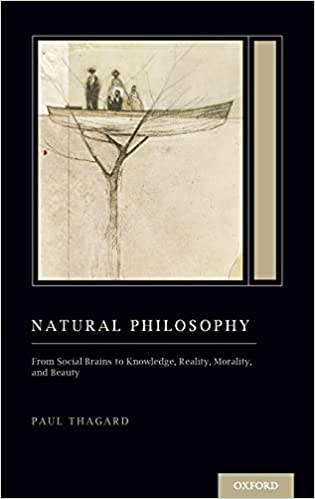
Thagard, P. (2019). Natural Philosophy: From Social Brains to Knowledge, Reality, Morality, and Beauty . New York: Oxford University Press.
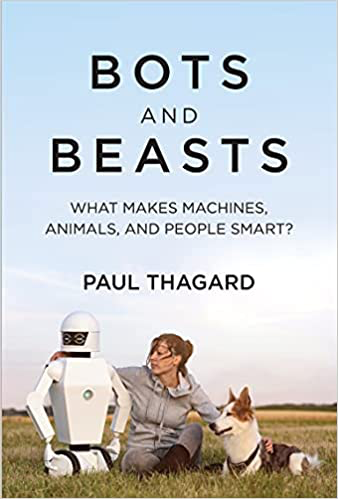
Thagard, P. (2021). Bots and Beasts: What Makes Machines, Animals, and People Smart? Cambridge, MA: MIT Press.

ABOUT THE INTERVIEWER
Richard Marshall is biding his time.
Buy his second book here or his first book here to keep him biding!
End Time series: the themes
Huw Price's Flickering Shadows series.
Steven DeLay's Finding meaning series
NEW: Joseph Mitterer's The Beyond of Philosophy serialised